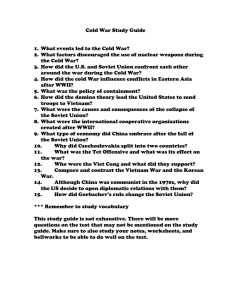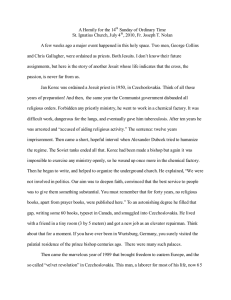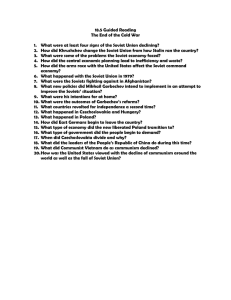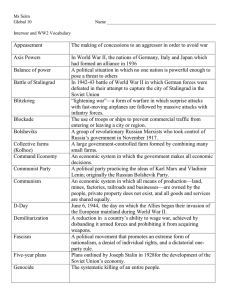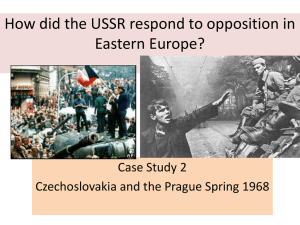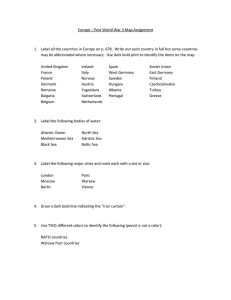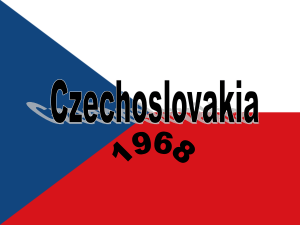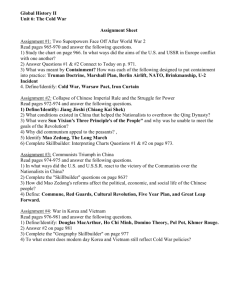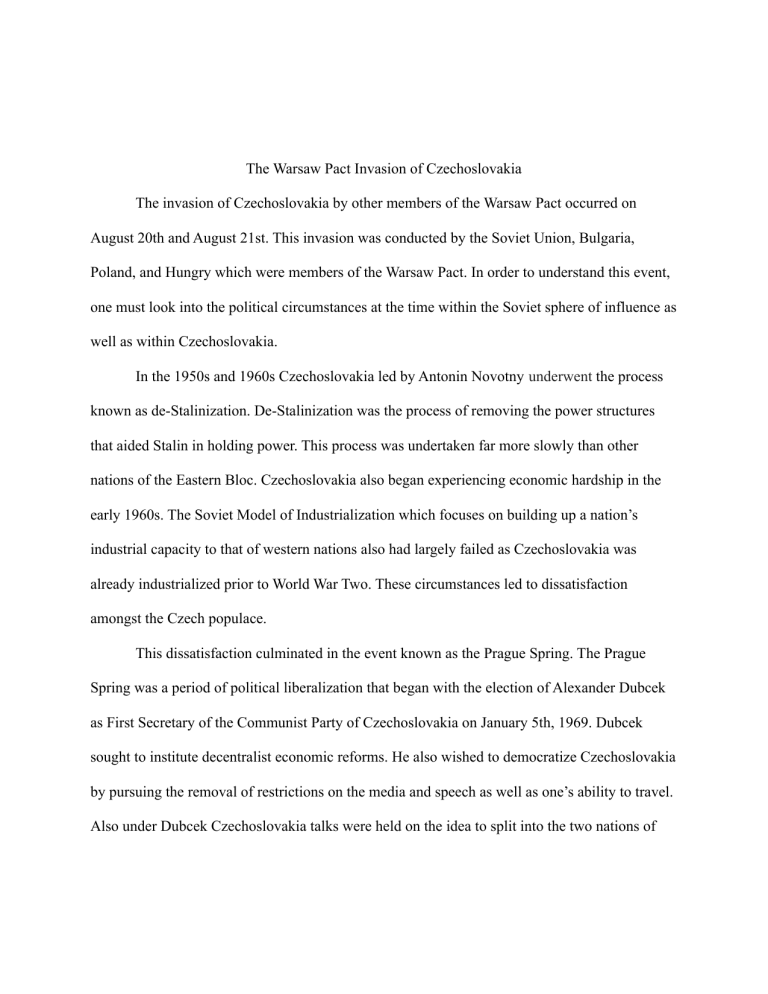
The Warsaw Pact Invasion of Czechoslovakia The invasion of Czechoslovakia by other members of the Warsaw Pact occurred on August 20th and August 21st. This invasion was conducted by the Soviet Union, Bulgaria, Poland, and Hungry which were members of the Warsaw Pact. In order to understand this event, one must look into the political circumstances at the time within the Soviet sphere of influence as well as within Czechoslovakia. In the 1950s and 1960s Czechoslovakia led by Antonin Novotny underwent the process known as de-Stalinization. De-Stalinization was the process of removing the power structures that aided Stalin in holding power. This process was undertaken far more slowly than other nations of the Eastern Bloc. Czechoslovakia also began experiencing economic hardship in the early 1960s. The Soviet Model of Industrialization which focuses on building up a nation’s industrial capacity to that of western nations also had largely failed as Czechoslovakia was already industrialized prior to World War Two. These circumstances led to dissatisfaction amongst the Czech populace. This dissatisfaction culminated in the event known as the Prague Spring. The Prague Spring was a period of political liberalization that began with the election of Alexander Dubcek as First Secretary of the Communist Party of Czechoslovakia on January 5th, 1969. Dubcek sought to institute decentralist economic reforms. He also wished to democratize Czechoslovakia by pursuing the removal of restrictions on the media and speech as well as one’s ability to travel. Also under Dubcek Czechoslovakia talks were held on the idea to split into the two nations of the Czech Republic and the Slovak Republic. This finally occurred in 1993 after the fall of the Soviet Union. In response to these reforms, the Soviet Union led by Leonid Brezhnev sought to enter negotiations with Czechoslovakia in order to curb the reforms. These negotiations seemingly went somewhat smooth with Czechoslovakia agreeing to increase censorship of their media as well as curb anti-socialist sentiment. Yet Brezhnev was dissatisfied with the negotiations. Brezhnev feared increasing sentiment in favor of liberalization. This combined with the vehement opposition to the Prague Spring by other Warsaw Pact nations such as Bulgaria, Hungary, and Poland set the stage for a full-scale military invasion. On August 20th the invasion launched with soldiers totaling 500,000 from the Soviet Union, Bulgaria, Hungary, and Poland invading Czechoslovakia. The invaders met practically no violent resistance. Just about the only resistance, they met were civilians giving them wrong directions and arguing with the soldiers. This was a deliberate effort on the part of Czechoslovakia as Dubcek openly stated to not resist the invasion. By August 21st the invasion had been completed. After the invasion, Dubcek returned to his position by August 27th. He remained in his position until April 1969 when he was forced to resign. This was as a result of the Czechoslovak Hockey Riots in which close to 500,000 people across the country rioted after the Czechoslovakia hockey team beat the Soviet team in the 1969 World Ice Hockey Championships. These Riots began because the Czechoslovakian people saw no further recourse for expressing their political views that were expressed during the Prague Spring. These Riots were quelled and Dubcek was replaced by Gustav Husak. Husak then ushered in the era of normalization which meant a return to the politics of before the Prague Spring. Czechoslovakia shared a border with Austria which was particularly tense. This shared border was fortified by the Soviet Union and considered part of the iron curtain. Also, Czechoslovakia was instituting democratic reforms which could make the Soviet Union vulnerable to losing their influence on Czechoslovakia. The Soviet Union wanted to maintain their control over nations between their borders and Western Europe. This is because the Soviet Union wanted to maintain a buffer with Western Europe to insulate themselves as much as possible from the influences of such. This is a particularly interesting case study because it demonstrates that a nation that feels the need to be competitive on the world stage will view the threat of losing power and influence as incredibly disfavorable. So much so that they would perform massive military actions in order to ensure it would not occur. This becomes even more evident considering how the negotiations between Czechoslovakia and the Soviet Union went. Czechoslovakia largely agreed to the Soviet Union’s demands of curtailing the freedoms granted during the Prague Spring. Meaning that the threat of such doesn’t seem as it was too significant. Works Cited KIRSCHBAUM, J. M. “Slovakia in the De-Stalinization and Federalization Process of Czechoslovakia.” Canadian Slavonic Papers / Revue Canadienne Des Slavistes, vol. 10, no. 4, 1968, pp. 533–56. JSTOR, www-jstor-org.library.collin.edu/stable/40866191?seq=5#metadata_info_tab_cont ents. Reti, Tamas. “11. Soviet Economic Impact on Czechoslovakia and Romania in the Early Postwar Period: 1944–56.” Wilson Center, www.wilsoncenter.org/publication/11-soviet-economic-impact-czechoslovakia-an d-romania-the-early-postwar-period-1944-56. Accessed 19 Apr. 2021. ---. “Soviets Invade Czechoslovakia.” HISTORY, 19 Aug. 2019, www.history.com/this-day-in-history/soviets-invade-czechoslovakia. History.com Editors. “Prague Spring Begins in Czechoslovakia.” HISTORY, 4 Jan. 2021, www.history.com/this-day-in-history/prague-spring-begins-in-czechoslovakia. “The Creation of the Soviet Buffer Zone - The Cold War (1945–1989) - CVCE Website.” Https://Www.Cvce.Eu/, Digital Research in European Studies, www.cvce.eu/en/education/unit-content/-/unit/55c09dcc-a9f2-45e9-b240-eaef644 52cae/a813e2e2-d50d-4f1f-a31b-0ffe5f2c169b. Accessed 19 Apr. 2021.
